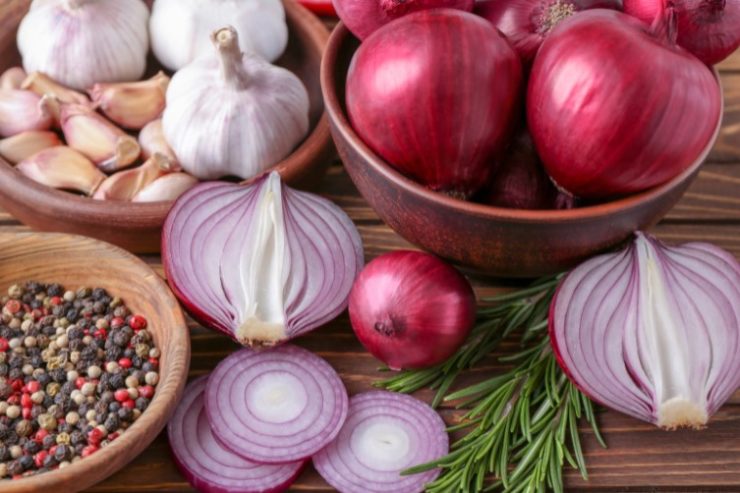Red onions are a versatile ingredient in the kitchen, but their claim to fame has to be as the go-to raw onion for things like salads and sandwiches.
They provide a good balance of sweetness and tang and are milder than your other standard-issue onions. But, they’re certainly not the only ones for the job.
There are a ton of different types of onions on the market. And after over a decade of cooking in professional kitchens, I’ve found that these are the 7 best red onion substitutes. No matter if you run out or just want to try something new.
In This Article
7 Recommended Red Onion Substitutes
1. Shallots
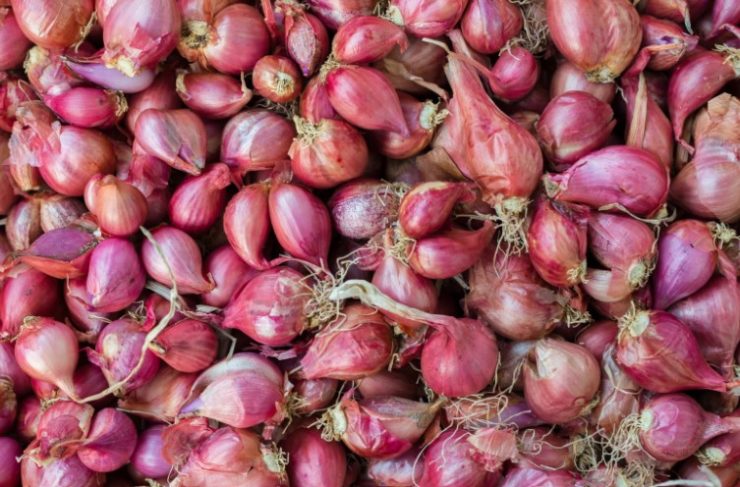
For the absolute best red onion substitute around, I don’t think shallots can be beat. I might even go as far as to say it’s far superior to the real thing!
Ok, let’s not get too crazy, but I really love shallots.
They’re delicate and sweet enough to be used raw. They cook up and caramelize beautifully. They’re perfect for pickling. And they provide a pop of red color, even if it is a little more subtle.
The only two things I can think of that shallots have against them, is their small size and sometimes high price. But once you get the hang of peeling them, shallots are the perfect substitute.
2. Sweet Onions
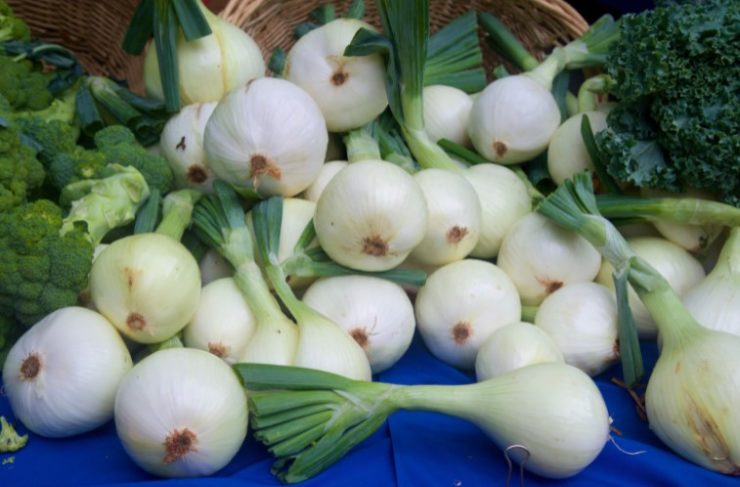
While not always the case, red onions are often the onion of choice for raw applications. Think things like salsas, salads, or on top of a burger or sandwich. And if that’s what you’re looking for, sweet onions make a great substitute.
Sweet onions are loaded with sugar and have a low sulfur content (part of what gives onions their bite). That makes these the perfect choice to eat raw. Plus, they are less likely to make you cry while you peel and prep them.
The other effect of the high sugar content is a shorter shelf life. So, while many onion varieties can be stored and sold for months, sweet onions are a bit more seasonal and not always available year-round.
3. Scallions (Green Onions)
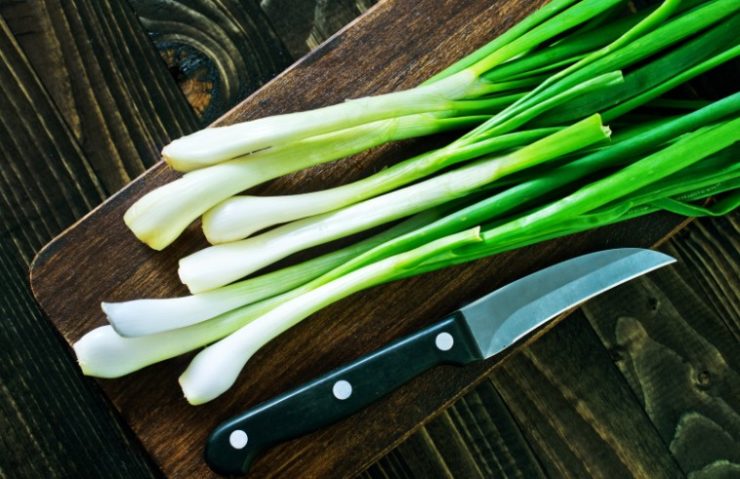
Unlike most types of onions, scallions (aka green onions) don’t have large bulbs that you eat. Instead, they are long, slim, and straight. And you eat the entire thing, from the white bottoms to the green tops.
Scallions won’t provide quite the same crunch that you get from red onions. But, they do provide a delicious onion flavor that’s equally good raw or cooked.

Scallion Anatomy: Scallions can be divided into two parts: whites (bottoms) and greens (tops). The whites have a stronger, sharper flavor, while the greens are milder. To take advantage of the two parts, cook the more intense whites and use the greens raw as a garnish.
4. Chives
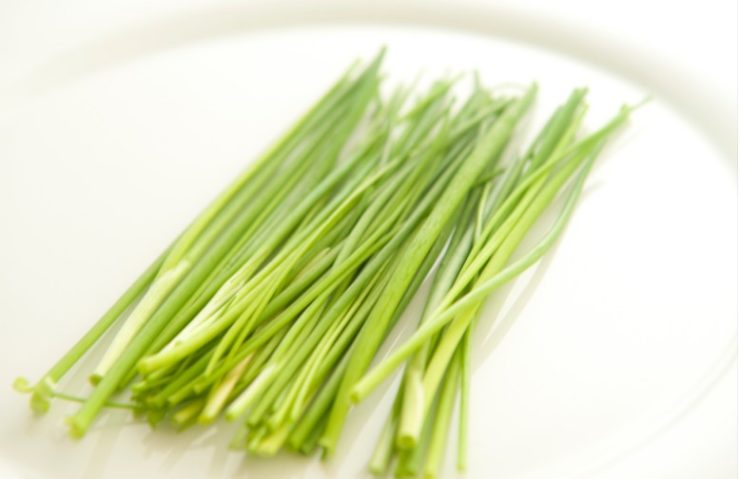
Chives are essentially the herb version of an onion. There’s no bulb to eat and they don’t provide a lot of texture. What they do provide, is a very refined and delicate onion flavor.
Cut chives into very small rounds and sprinkle them on a dish as a garnish, or mix them into soups, sauces, and grains for a subtle onion flavor that won’t overpower the other ingredients.

Pro Tip: When slicing a bunch of chives, gently wrap a moist paper towel around the bundle to keep them in place while you cut. Also, use a very sharp knife so you don’t end up crushing the delicate chives.
5. White Onions

White onions don’t have the same level of sugar as red onions. But even though they don’t bring much, if any, sweetness to the table it’s still a great onion to eat raw.
White onions have a clean and tangy taste that works well to cut through fat and balance a dish. Try using them as a topping for sandwiches, tacos, burgers, and hot dogs. Or, dice them up to add a great crunch and bite to salsa, and potato or chicken salad.
6. Yellow Onions
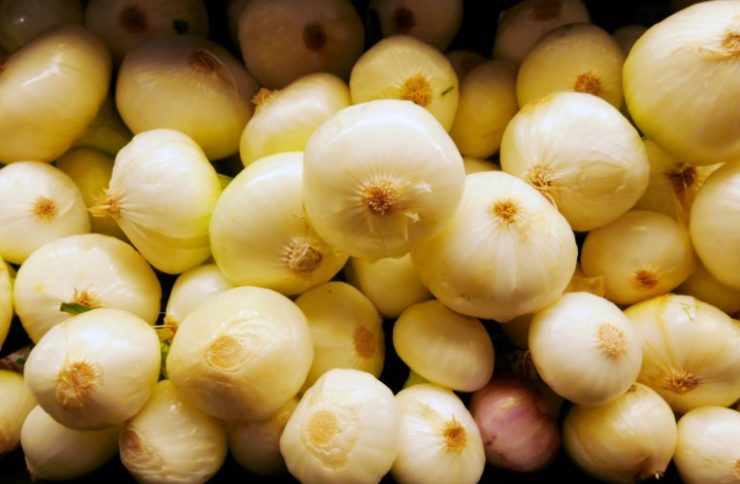
Yellow (or Spanish) onions are one of the most common types around. Part of the reason for that is because they are easy and inexpensive to grow, and when stored correctly have a very long shelf life.
Yellow onions have a very strong and assertive flavor, which means they’re generally not a great choice for eating raw. When it comes to cooking though, these onions are a true kitchen workhorse.
Use these for soup, stock, sofrito, caramelization, or anywhere else when you want a rich and deep onion flavor.
7. Spring Onions
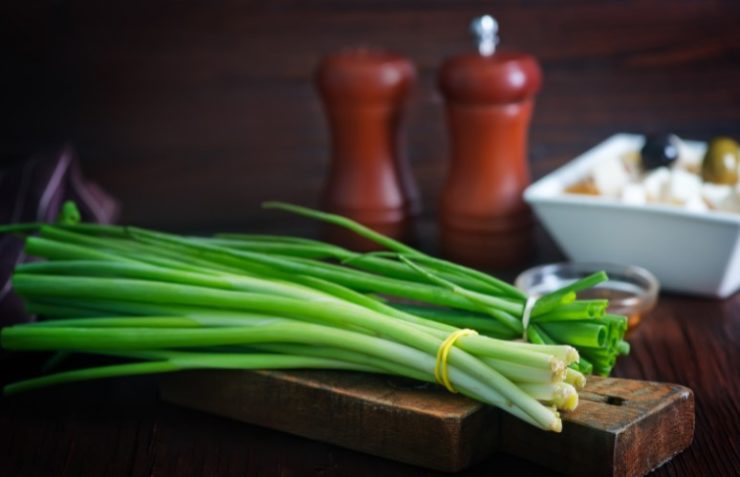
Spring onions are actually just the young, immature form of red, yellow, and white onions. And by picking them early, you get their delicious, sweet, oniony flavor before they’ve developed an assertive bite.
When buying them, spring onions will usually come with their green tops attached, making them look like an overgrown scallion. And you can use them in similar ways, with both the tops and bottoms working great raw or cooked.
Since spring onions are only available for a short period each season it also means they draw somewhat of a high price.
Tips For Working With Red Onion Substitutes
When choosing a substitute, think about what the intended purpose of the red onion was in the first place.
If it was to add flavor and sweetness, look to the more sweet and mild onion varieties like shallots, sweet onions, and spring onions. Or an even more delicate flavor from scallions and chives.
For cooking applications, yellow onions can be hard to beat. And if you want a little more bite to cut through a rich sandwich or other dish, the tangy flavor of white onions is a great choice.
Frequently Asked Questions
Can I Use Shallots Instead Of Red Onions?
Shallots are a great red onion substitute. Their flavor is milder, but they’re delicious raw, or cooked. Plus they’re one of the few options that also add a similar color.
What’s The Best Red Onion Substitute For Salsa?
White onions are one of the best onions for salsa. They don’t provide the same color as red onions, but they have a great crunch and a clean tangy flavor that works well in salsa.
What’s The Difference Between A Red Onion And A Purple Onion?
Red and purple onions are the same things. The names can be used interchangeably, but we tend to favor “red” here in the states, while some European countries go the “purple” route.
